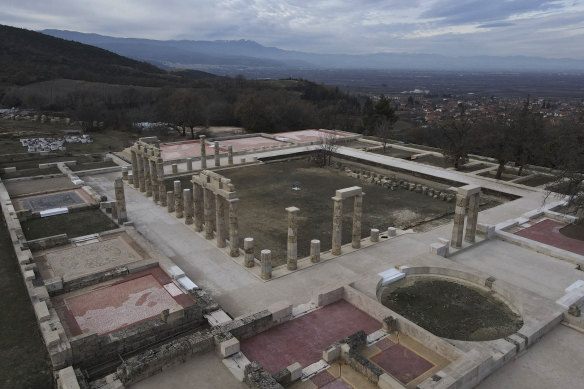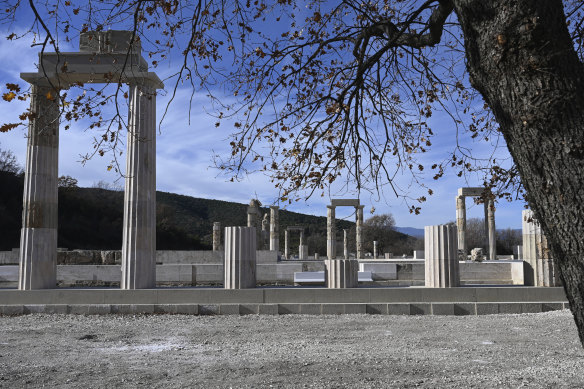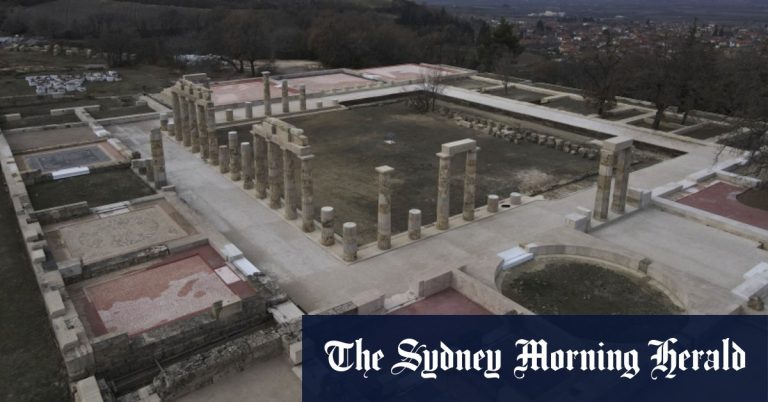Ancient Aegae, Greece: It was the largest building in classical Greece: the palace where Alexander the Great was proclaimed king before he began an invasion that led him to modern-day Afghanistan.
The site of the Palace of Aegae, near modern Vergina in northern Greece, underwent a 16-year renovation costing more than 20 million euros ($32.6 million) and including financial support from the European Union.

Part of the Palace of Egai, built over 2,300 years ago during the reign of Alexander the Great's father in ancient Egai, Greece.credit: AP
It was built more than 2,300 years ago during the reign of Alexander's father, Philip II, who transformed the Kingdom of Macedonia into a dominant military power in ancient Greece. Aigai was its royal capital.
“After many years of painstaking work, we can unveil the palace… What we are doing today is an event of global importance,” Prime Minister Kyriakos Mitsotakis said at a dedication ceremony at the site on Friday.
The palace contained courtyards with columned edges, courts, places of worship, and spacious celebration halls, and its floors were decorated with engraved marble and intricate mosaics. The building covers a floor area of 15,000 square meters, which is slightly less than the area covered by the US Capitol Building.
The Palace of Egae, designed as two adjacent plots of unequal size, was the administrative and spiritual center of the Kingdom of Macedonia. “The Aigai provides important information about the culture, history and society of the ancient Macedonians, the Greek border tribe who preserved ancient traditions and carried Greek culture to the outer frontiers of the ancient world,” according to UNESCO.
The palace remains and nearby royal tombs are considered UNESCO World Heritage Sites. Like a 3D jigsaw puzzle, the marble columns were brought to life by inserting pieces of stone discovered in the ruins with replica replacement pieces.

It was the largest building in classical Greece: the palace where Alexander the Great was proclaimed king before he began an invasion that led him to modern-day Afghanistan. credit: AP
About 65 kilometers southwest of the coastal city of Thessaloniki, the island of Aigai came to international attention in the late 1970s during excavations of burial mounds in its undulating green hills and patches of wild poppies and daffodils.

